This image shows the rock called "Souffle".
Click on image for full size
Image from: NASA/JPL
Martian Surface Winds
On Mars the surface winds accelerate to higher speeds than those on
Earth. The general circulation pattern of winds is also very different from the
terrestrial circulation pattern. These winds can be whipped to an extreme during the frequent Martian
global dust storms.
Sand grains from the surface are picked up by the winds and accelerated to high speeds. This leads to a gouging and chipping effect which contributes toward sand erosion of the surface by wind. Because of Mars' lower gravity, the winds can more easily lift and carry sand particles. But the lower atmospheric pressure of Mars makes the motion of sand particles different than what would be expected on Earth. This makes the erosion of Martian rock a little different than on Earth.
The first weather measurements made from the surface of Mars were performed by the Mars Pathfinder mission. These measurements provided some real data about the strength of Martian winds. Features, found by the Mars Pathfinder lander provided plenty of evidence for sand erosion by wind.
You might also be interested in:
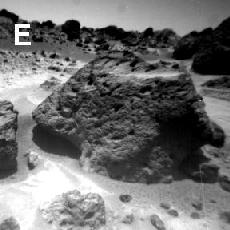
Dried debris left after a flood is "wind mobile" and can be lifted into the air by winds. The general process by which this occurs is called "saltation". Saltation is the primary form of abrasion and erosion
...more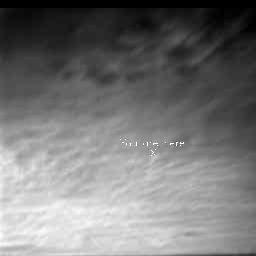
This is the first image showing clouds of Mars taken from the lander. Ground based viewing of Mars has shown that clouds seem to be plentiful only in the middle latitudes As early as 1796 scientists were
...more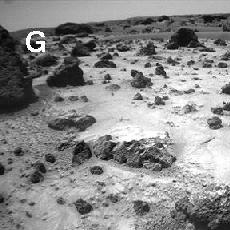
Unlike the rocks of Earth, where there are many things which cause erosion, there are only two main weathering agents on Mars: wind and acid fog. Acid fog is very important, but because there is not a
...more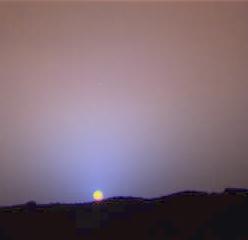
This is image of a Martian sunset illustrates just how thin the Martian atmosphere is. The terrestrial "blue sky" comes about because molecules of the atmosphere scatter sunlight. In this image, the Martian
...more
On Mars the surface winds accelerate to higher speeds than those on Earth. The general circulation pattern of winds is also very different from the terrestrial circulation pattern. These winds can be whipped
...more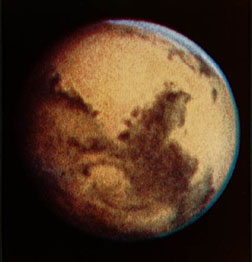
Mars is much like Venus-- it's very bright and therefore easily spotted in the night sky. Because of this, we don't know who exactly discovered Mars. We do know it was named after the Roman god of war,
...more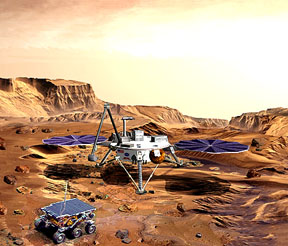
If approved, the Mars 2003 mission will have two important parts. The first is the Mars Surveyor 2003 Lander, which will be launched sometime between May 27, 2003, and June 17, 2003. The lander will use
...more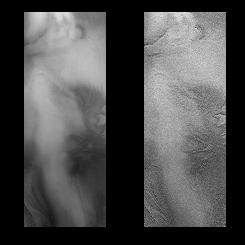
The Mars '98 lander was supposed to land in the south polar region of Mars. This image of layered terrain near the south pole was provided by the Mars Global Surveyor mission. In the image, ground fog
...more













